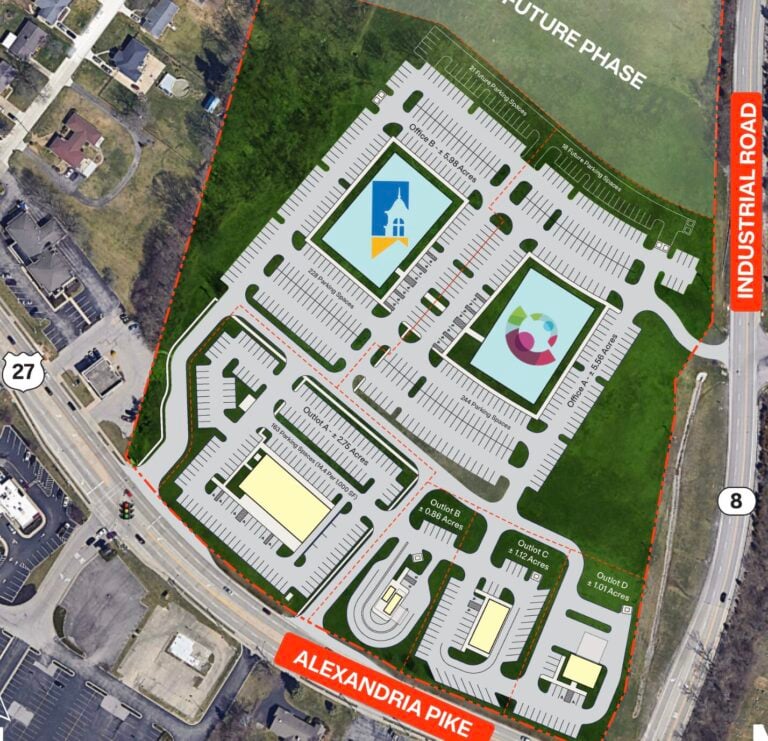Whether it’s gesturing, shouting, threatening — or worse — anger behind the wheel is becoming far too common on America’s roadways. Aggressive behaviors, ranging from speeding to acts of violence, pose a threat not only to other drivers but to passengers and pedestrians as well.
“Road rage is the term used to describe extreme anger and aggression behind the wheel,” says Lori Weaver Hawkins, public affairs manager, AAA Blue Grass. “Not only are these displays of hostility unsafe for those on and near the roadway, but a growing number of these incidents are turning deadly.”
Aggressive driving versus road rage
According to the National Highway Traffic Safety Administration (NHTSA), the term “aggressive driving” first began to emerge in the 1990s to describe a category of unsafe driving behaviors, such as weaving through traffic, running traffic lights, tailgating and driving at excessive speeds.

Road rage occurs when aggressive driving behaviors become extreme or violent. Examples range from angry gesturing and cursing to confronting, sideswiping and brandishing of weapons and other violent actions or threats.
While aggressive driving behaviors are traffic violations, road rage behaviors other than gesturing and shouting are criminal offenses.
Earlier this year, Everytown for Gun Safety Support Fund released its latest analysis of road rage shootings in the U.S., finding that such incidents have continued to increase every year since 2018.
In 2022, 554 people were shot during road rage incidents nationwide, resulting in 413 injuries and 141 deaths―twice the numbers from 2018. The incidence of road rage shootings last year equates to one person being wounded or killed in a road rage incident every 16 hours.
The same data revealed there were 1.34 people shot per 1 million residents during road rage incidents last year in Kentucky. In 2023 to date, there have already been four victims and one suspect injured during road rage shootings.
Because they’ve seen an increase in aggressive behavior on the roadways, the Lexington Police Department recently launched an Aggressive Driving Enforcement Campaign to address and prevent aggressive driving. Through July 31, the department will have officers working dedicated overtime to curb aggressive driving.
Reasons for road rage
According to the American Psychological Association (APA), some people are more prone to road rage than others. These high-anger drivers are more impulsive, engage in hostile thinking and are more likely to seek revenge over a purported wrong. While these drivers may behave appropriately on a quiet country road, the APA points to research indicating traffic congestion and other environmental factors can more easily set off road rage behaviors.
Data from the AAA Foundation for Traffic Safety shows that nearly 80 percent of drivers expressed significant anger, aggression or road rage behind the wheel at least once within the previous 30 days. In a related study, the Foundation found potentially aggressive actions―such as tailgating, erratic lane changing or illegal passing―are a factor in up to 56% of fatal crashes.
While there are undoubtedly numerous reasons behind the growing problem of over-aggression behind the wheel, research from AAA and NHTSA point to a number of likely contributing factors:
• Traffic congestion. No matter the cause, on-the-road delays and rising traffic congestion are frustrating for all. But some motorists have extremely low tolerance for delays, leading to tailgating, erratic lane changes and other aggressive behaviors.

• Running late. A seemingly endless stream of errands and obligations weigh more heavily on some drivers than others, contributing to a pattern of aggression behind the wheel.
• Anonymity. Some drivers feel insulated and detached from the outside world when in their vehicle, giving them a feeling of anonymity. For some, this causes an erosion of inhibitions to antisocial behavior, while the vehicle itself gives them a sense of power.
• Changes in acceptable behavior. Just as other “norms” have changed over time―music, fashion, politics―human behaviors behind the wheel continue to evolve. It can become more acceptable to have less regard for law enforcement and fellow citizens as drivers “look out for number one.”
“Drivers should consider whether any of these scenarios apply to their own actions behind the wheel and take measures to resolve them. Learning techniques for stress-relief, better time management and anger control could help keep you and others safe,” Weaver Hawkins says.
“Think twice before making a rude gesture or laying on the horn and you’ll dodge a potential road rage incident.”
Avoiding road rage
While it isn’t possible to control another driver’s behavior, there are steps you can take to avoid becoming a victim of road rage. AAA has these tips for avoiding aggression on the roadways:
• Practice polite driving habits. Follow the rules of the road and be courteous to others. If you inadvertently make an error that affects another driver, give a wave and smile. That simple act will often defuse a potential aggressor.
• Slow down and let the aggressor pass. When you pull to the side or change lanes and let an aggressive driver pass, they will typically be glad they’re on their way and not try to engage further.
• Keep your cool. Remember, you’re not the police. Even if a driver is doing a poor job, it is not your job to correct them. Give other drivers the benefit of the doubt and don’t take their errors as a personal attack. If you encounter an aggressive driver, do not make eye contact, display anger or engage in any way.
• Lay off the horn. Save the horn for an emergency situation or tap it lightly if you need to alert a driver to a changed traffic signal. Do not use it to “call out” the driving behaviors of others.
• Don’t drive under distress. Avoid driving if you’re angry, upset or fatigued. Never drive impaired.
• Be realistic about your travel time. Consider the amount of traffic you’ll likely encounter and give yourself plenty of time to reach your destination without speeding or driving aggressively.
• Call 911 if you’re threatened. Aggressive drivers can be reported to local police, but if an aggressive driver threatens or attacks you, call 911 immediately. Do not make eye contact or engage in any way. Drive to the nearest police station, fire station, convenience store or other public location with witnesses. Never drive home with an aggressor following you.
“Remember, driving isn’t a competition, so there’s no need to ‘one up’ another driver. Your only win should be staying safe,” says Weaver Hawkins. “Keep your focus on your own driving and avoid actions that could make you a target of aggression from others.”
AAA Blue Grass

















